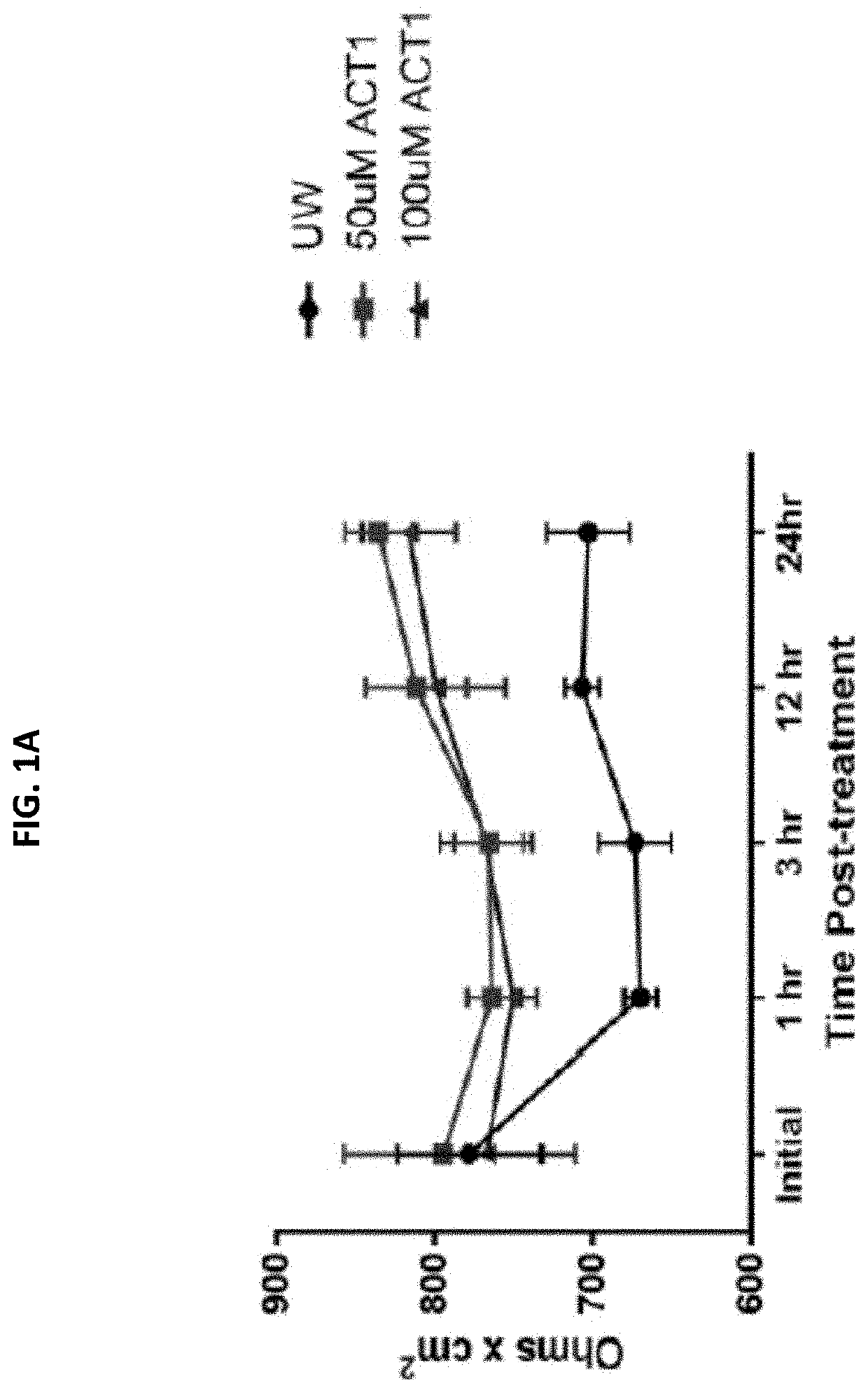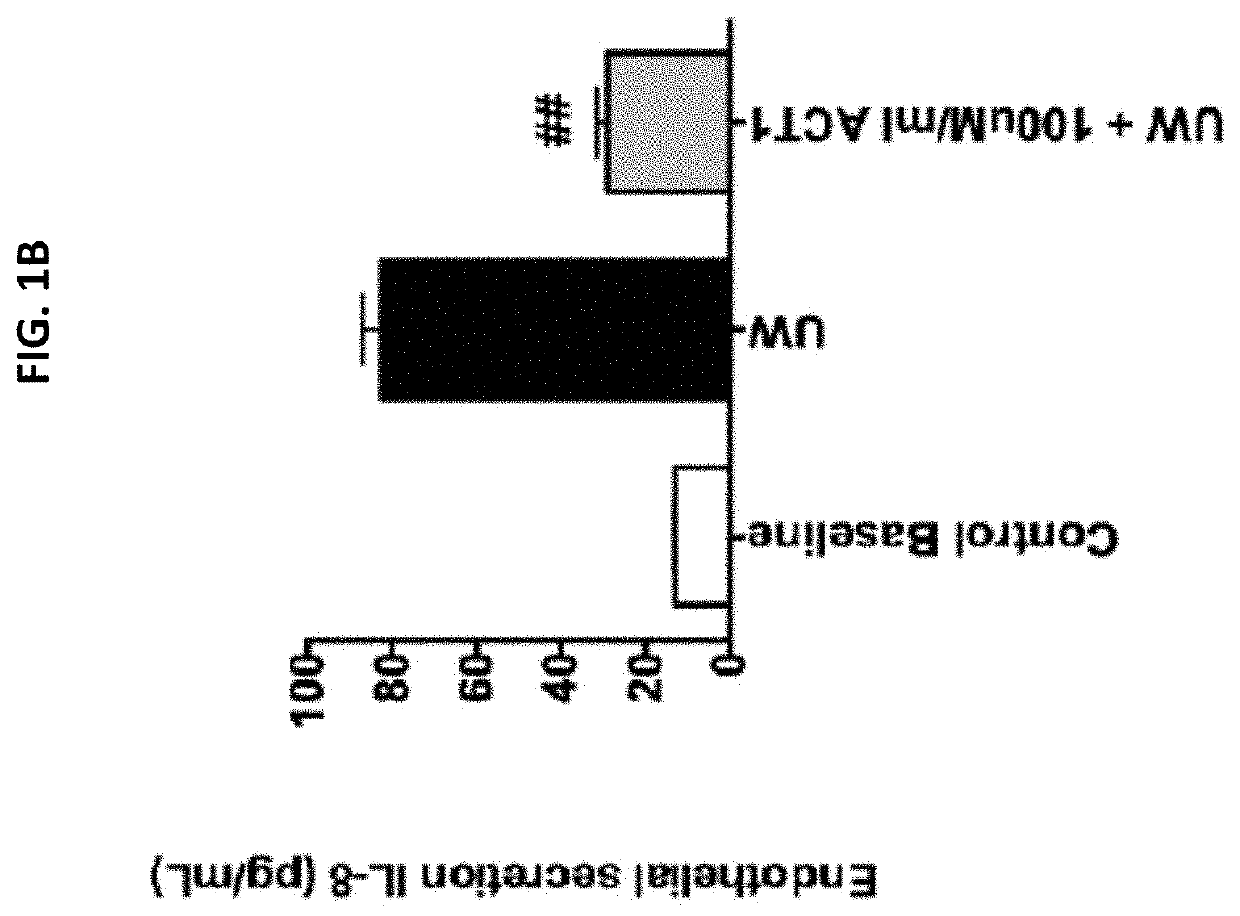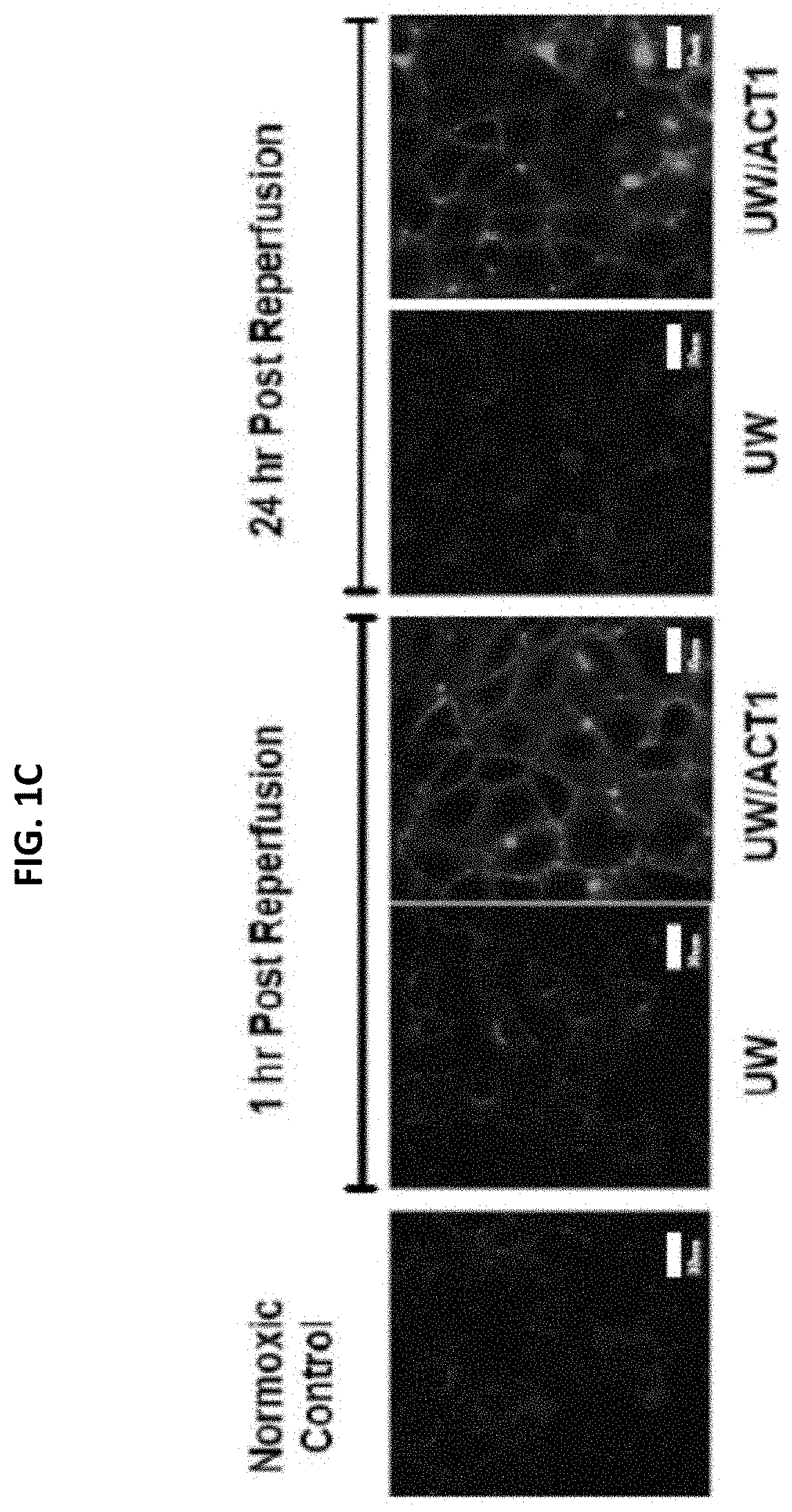Compositions and methods for preserving organ transplants
a technology for organ transplants and compositions, applied in the field of compositions and methods for preserving organ transplants, can solve problems such as cell injury, and achieve the effect of reversing cell injury
- Summary
- Abstract
- Description
- Claims
- Application Information
AI Technical Summary
Benefits of technology
Problems solved by technology
Method used
Image
Examples
example 1
reatment of Endothelial Cells Prevents Cold Storage and Reperfusion Injury while Limiting Pro-Inflammatory Cytokine Responses
[0101]Endothelial cells (EC) were pre-treated with University of Wisconsin (UW) solution only, or UW solution comprising 50 μM or 100 μM ACT1. Cold storage and reperfusion injury, pro-inflammatory cytokine release, and gap junction stabilization (Cx43 expression) were measured. FIG. 1A shows that ACT1 pretreatment prevented cold storage and reperfusion injury at both concentrations (50 μM or 100 μM ACT1) at 1 hour, 3, hours, 12 hours, and 24 hours post-treatment, as measured by electrical resistance. FIG. 1B shows that ACT1 pretreatment significantly reduced IL-8 release from the ECs. FIG. 1C shows that pretreatment increased Cx43 expression at 1 hour and 24 hours post reperfusion.
example 2
entation of UW Solution Reduces Ischemic Reperfusion Injury (IRI)-Induced Heart Graft Injury and Early Post-Transplantation Immune Cell Infiltration
[0102]Heart allograft transplants were performed between Balb / c donors to B6 recipients as shown in FIG. 2A. Balb / c donor hearts were removed, perfused with UW solution and then static cold stored in either UW solution alone or UW solution supplemented with ACT1 peptide for 6 h at 4° C. Following storage, hearts were implanted into B6 recipients. To assess the impact of ACT1 peptide augmented cold storage on heart vascular permeability / damage, recipients were injected with Evan's Blue Dye immediately following reperfusion. Hearts were then harvested and assayed for Evan's Blue uptake.
[0103]As shown in FIG. 2B, the presence of ACT1 peptide in the cold storage solution significantly reduced the amount of Evan's Blue per mg tissue. Thus, ACT1 peptide reduced endothelial permeability post-transplantation. As shown in FIG. 2C, the presence of...
example 3
ta ACT Pre-Treatment Ameliorates Neointimal Hyperplasia
[0104]Heart allograft transplants were performed between Balb / c donors to B6 recipients as described above and shown in FIG. 2A. Aortic allografts were stored for 6 hours or 24 hours, and assessed on Day 28 after transplantation for neointimal hyperplasia (a hallmark of chronic rejection) and T cell infiltration. FIG. 3A shows that donor aorta ACT preservation solution treatment ameliorates neointimal hyperplasia following aorta transplantation. FIG. 3B shows that the percent intimal expansion is significantly reduced at 28 days post-treatment with ACT1 pre-treatment, including aortas stored for 24 hours.
PUM
| Property | Measurement | Unit |
|---|---|---|
| temperature | aaaaa | aaaaa |
| concentration | aaaaa | aaaaa |
| size | aaaaa | aaaaa |
Abstract
Description
Claims
Application Information
 Login to View More
Login to View More - R&D
- Intellectual Property
- Life Sciences
- Materials
- Tech Scout
- Unparalleled Data Quality
- Higher Quality Content
- 60% Fewer Hallucinations
Browse by: Latest US Patents, China's latest patents, Technical Efficacy Thesaurus, Application Domain, Technology Topic, Popular Technical Reports.
© 2025 PatSnap. All rights reserved.Legal|Privacy policy|Modern Slavery Act Transparency Statement|Sitemap|About US| Contact US: help@patsnap.com



